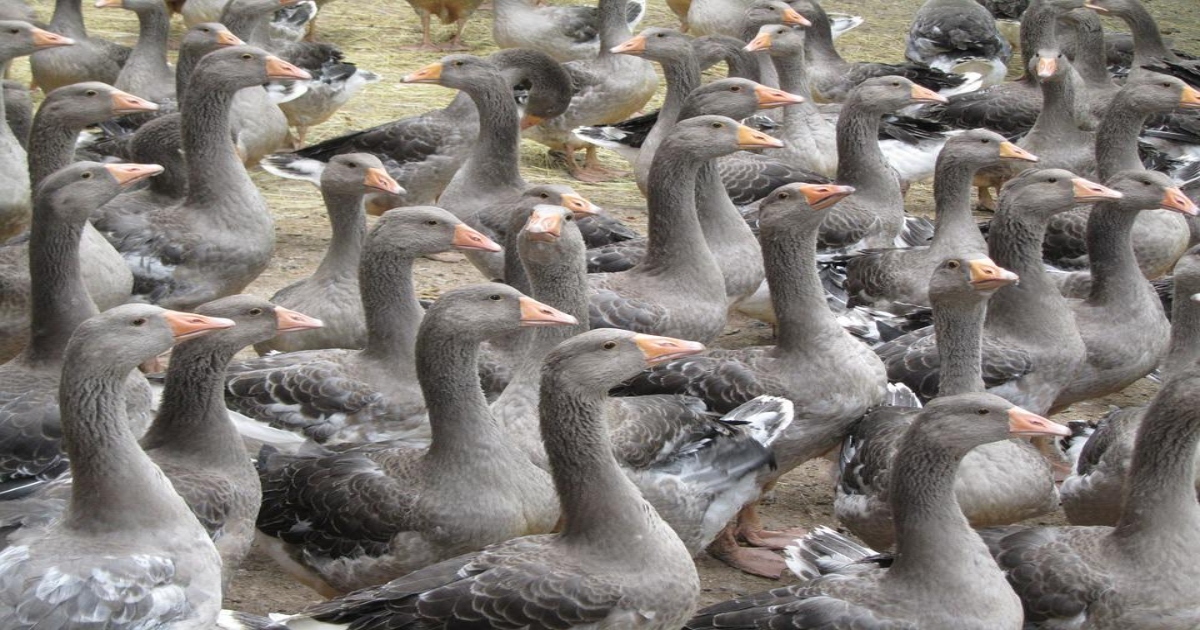Sayonara to Foie Gras
Why not focus our wrath against the mass-producers of cheap chickens before we attack niche-market foie gras?
May 29, 2021

Foie gras is an elitist dish if ever there was one, going back all the way to the time of the ancient Egyptians.
The epicure Apicius “late-4th or early 5th-century author of the only surviving Roman cookbook” is credited by Pliny the Elder with the practice of feeding figs to geese to enlarge their livers.
Lack of availability of fois gras
These days, it is not figs but corn that the geese are fattened on. Regardless of whatever geese are fed, foie gras may soon become unavailable.
Before you decide I am rising in protest, retaining or banning access to foie gras is not the case I want to make. You can decide for yourselves.
I would like to propose a broader case – for coming to a decision on All Issues, in Any Category, on the basis of facts and for issues to be prioritized in order of importance.
Science behind force feeding
Facts: “Gavage” is the word for feeding a goose through a funnel inserted in the throat. Like many birds, a goose’s throat can stretch, allowing it in the wild to swallow a large fish and store it in the esophagus before digesting it in the stomach.
Before geese migrate, they deliberately gorge themselves, increasing their livers, to sustain themselves in their thousands of miles of flight.
The main controversy
The European Union’s Scientific Committee on Animal Health and Animal Welfare on “Welfare Aspects of the Production of Foie Gras in Ducks and Geese” found no “conclusive” scientific evidence of the averse physical nature of force feeding a caged goose.
Conversely, issues of stress and cruelty arise related to the “management and housing” of geese packed tightly into pens far too small. Cruelty and stress do not arise, says the report, with un-penned geese, which were observed to enter feeding areas voluntarily for hand feeding.
There is certainly a powerful case to make against the factory farming of foie gras.
But drive across the Dordogne in south-west France, the department where the raising of ducks and geese is central to its economy — you will see fast, free-moving flocks of geese waddling to be fed towards the farmer clutching a stool, buckets of maize and a funnel.
Chicken production in abundance
Order of importance: Each year, the UK imports just over 200 tons of foie gras. Each week, the United Kingdom slaughters 20 million chickens — 86% have been processed on one of the UK’s 1,534 industrial-sized farms.
Once themselves a “special treat,” chickens are now eaten in vast quantities because squalid production practices have rendered them astoundingly cheap.
Cruelty to the core
After China, the world’s greatest consumer of chicken is the United States. In both nations, chickens are raised in industrial poultry farms where birds are squashed together so tightly they cannot lie down (in their own excrement).
Unable to move, they chew each others’ feathers off (causing some producers to chop off their beaks). Without exercise, their breasts expand in exaggerated proportion to the rest of their bodies.
Chicken vs geese production
In 2018 alone, 9 billion broiler chickens were produced in the United States. Per person, more than 93.5 pounds of chicken were eaten.
By contrast, Hudson Valley Foie Gras, the largest U.S. producer of foie gras, has sold the livers of around 10 million fowl, primarily for restaurant, not domestic use in the last 30 years.
Export of undesirable chicken parts
The breast is America’s most popular chicken part by far. So industrial chicken producers like Perdue — which has taken over 90% of independent U.S. chicken farms — and rival Tyson, dispatch the less sale-able thighs and wings down to Mexico to devastating effect on that nation’s domestic poultry farmers.
Negligence and mismanagement
With an eye on post-Brexit opportunities, Tyson, a $42.4 billion turnover enterprise, invaded the UK in 2020 to pursue what it called “aggressive aspirations” for the European meat market.
Its plant in Wrexham in north-east Wales has been a hotspot for coronavirus outbreaks, as have Tyson factories in the United States.
John Casey, local manager of the Tyson facility in Waterloo, Iowa, is alleged to have “explicitly directed supervisors to ignore symptoms of Covid-19” in employees.
No action against this cruelty?
Processed fowl fare no better. Where is the U.S. and the U.K. legislative response to the living conditions of industrial chickens?
Why are those so outraged about goose livers not equally concerned about the far greater and more widespread cruelty to chickens?
When even factory-farmed ducks and geese live in cages up to four times the size of those given to chickens, why are we not focusing our wrath against the mass-producers of cheap chickens before we attack niche-market foie gras?
Hue and cry about fois gras
In the United States, foie gras has been a target of legislators for a decade. When Democrat John Burton sat in the California State Senate, he pushed to ban the production, sale and distribution of foie gras from 2012.
A veto on its sale and distribution in Chicago followed, then legislation preventing the force-feeding of ducks and geese for foie gras production in New Jersey, with legal complaints lodged against top Hudson Valley producers.
In 1919, New York mayor Bill de Blasio signed a bill to ban foie gras sales in New York.
Ban industrial chickens, not fois gras
At the time of Burton’s bill, the senator told The San Francisco Chronicle: “I’ve eaten foie gras. It ain’t my cup of tea.”
How improved would be the lot of the 19 million tons of industrially-farmed U.S. chickens if they weren’t his cup of tea either? Or the 20 million tons of chickens consumed annually in China? Or the 12 million tons in Brazil?
The total 2020 figure for European consumption of foie gras is 22,586 tons, including Britain’s 219 tons. Go ban it, Boris. World-beating political action.
Recipe
No animals are harmed in the making of this pâté, eaten on toast like foie gras.
70g/¾ cup walnuts
400g/14oz can kidney beans, drained
1 clove garlic, peeled
6-8 fresh coriander/cilantro sprigs
1 tablespoon fresh lime juice
½ teaspoon ground cumin
2 teaspoon smoked paprika
1 teaspoon cayenne pepper or to taste
Salt and freshly ground black pepper to taste
Put the whole lot into a blender or processor and blitz to a paste. Serve with toasted sourdough.
Takeaways
Where is the U.S. and the U.K. legislative response to the living conditions of industrial chickens?
Industrial chicken producer Tyson plant in Wales and the US has been a hotspot for coronavirus outbreaks.
Industrial chicken producers dispatch the less sale-able chicken thighs and wings to Mexico, resulting in losses to Mexico's domestic poultry farmers.
In both the US and China, chickens are raised in industrial poultry farms where birds are squashed together so tightly they cannot lie down.

